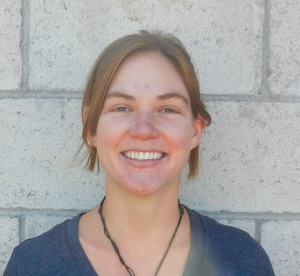we met Monika, now an ATC project manager, when we were down there in March doing the natural building project. little did we know that she would become a part of ATC! what follows below is her summary of the insulation project.
I need to preface this with a note that the village elder who helped us find a suitable project location, Don Victoriano, chose a local family who really needed this project to keep warm and to upgrade their home. Don V. in his egalitarian fashion did not choose a member of his family to receive the work, rather he chose the family who could benefit most from our work.
The mission of our project was to invent and implement a low-cost, sustainable and replicable solution to insulate concrete and tin-roofed homes in the extreme highlands of Guatemala.

Back Yard of Family Home
Nueva Santa Catarina Ixhuacan (NSCI) is a small indigenous community that lost their traditional homes (made of adobe or mud) to a landslide over 10 years ago. International development funds went to a quick rebuild of the small town using concrete and tin to provide basic shelter. Years later, doctors are finding severe illnesses in the community and argue that the severe cold – inescapable even indoors – has been weakening the immune systems of the young and old. This town is known to have snow and frequent frosts over the winter, and during our week-long stay in early May the team experienced 3 hailstorms and a constant chill. Our personal experience with the cold (and desperately huddling over our hostmother’s cookfire) was a constant motivator to succeed in our project.
Prior to arrival in NSCI, the team of four engineering students from University of Michigan ran tests on various materials to study the effectiveness of insulation materials available in the developing world. In Guatemala, John Barrie and I referred to their findings and sourced out recycled corn sacks at the bustling city market in Xela. The seller of these sacks was an old indigenous woman whose stall was packed to the ceiling with ‘bags of bags’ - selling us 300 costales at 2 Quezales each – that’s about 25 cents a bag. Of course, these bags can be easily collected for free from wholesalers, but for the purpose of our project, time was of the essence.

Jeremy, Teresa, Jackie and JC
Up in Nueva Santa Catarina Ixhuacan, the team of students and myself introduced ourselves to Manuel and Juana, a middle-aged couple with three daughters who work together in a family weaving business. The best room in the house was dedicated to their giant wooden loom, for which Juana coordinates the design and Manuel weaves as instructed. Juana speaks almost no Spanish, and does not know how to read or write. But she was clear and opinionated about the aesthetic of our project, and often poked her head in the door to ask what we were doing and why. Her husband, Manuel, translated from my Spanish to Quiche and she would nod in approval or give a blank face if we had more work to do before we reached her satisfaction. Manuel was raised by his grandmother after his mother died and his father moved to the coast to make a living picking fruit. At age 14 his grandmother passed away and Manuel dropped out of school to work in various jobs. It turns out carpentry was one of them, and Manuel came to the rescue through the course of the project.
This leads us to the most magical moments of our insulation project. Manuel and Juana, welcoming hosts as ever, started the first day by offering us a hot cornmeal drink called atole, a welcome treat after a chilly day of sealing up the holes in their wall. The next day, they helped us fold the 300 corn sacks while we asked each other questions – how did Juana and Manuel meet? At what age do people get married in the United States? What about divorce? It was a rich moment of cultural exchange from both sides.
Next, the students installed the folded corn sacks over a network of string tied up along the slant of the ceiling. Several neighbors stopped by and asked about what we were doing. One young man asked detailed questions about the price of the corn sacks and said, “Huh, I could do this at my house.” And by the look on his face, I truly think he will.

Jeremy and Teresa Paint Room With Finished Ceiling
One more important detail needed to be done: window insulation. The thin window panes did not close tight, letting out any heat the ceiling insulation would keep down. The students came up with a brilliant simple design – quilting 3 layers of corn sacks between fabric, chosen and provided by Juana. A student, Teresa, and I were led up the hill to Juana’s sister’s house – another Teresa! The two Teresas and I worked on a pedal-powered Singer sewing machine to quilt the insulating curtains so that they would lay flat and tight onto the window in the evening and easily roll up for the daytime. They looked fantastic.

Monika With Window Quilt
Monika Goforth - ATC Project Manager

No comments:
Post a Comment